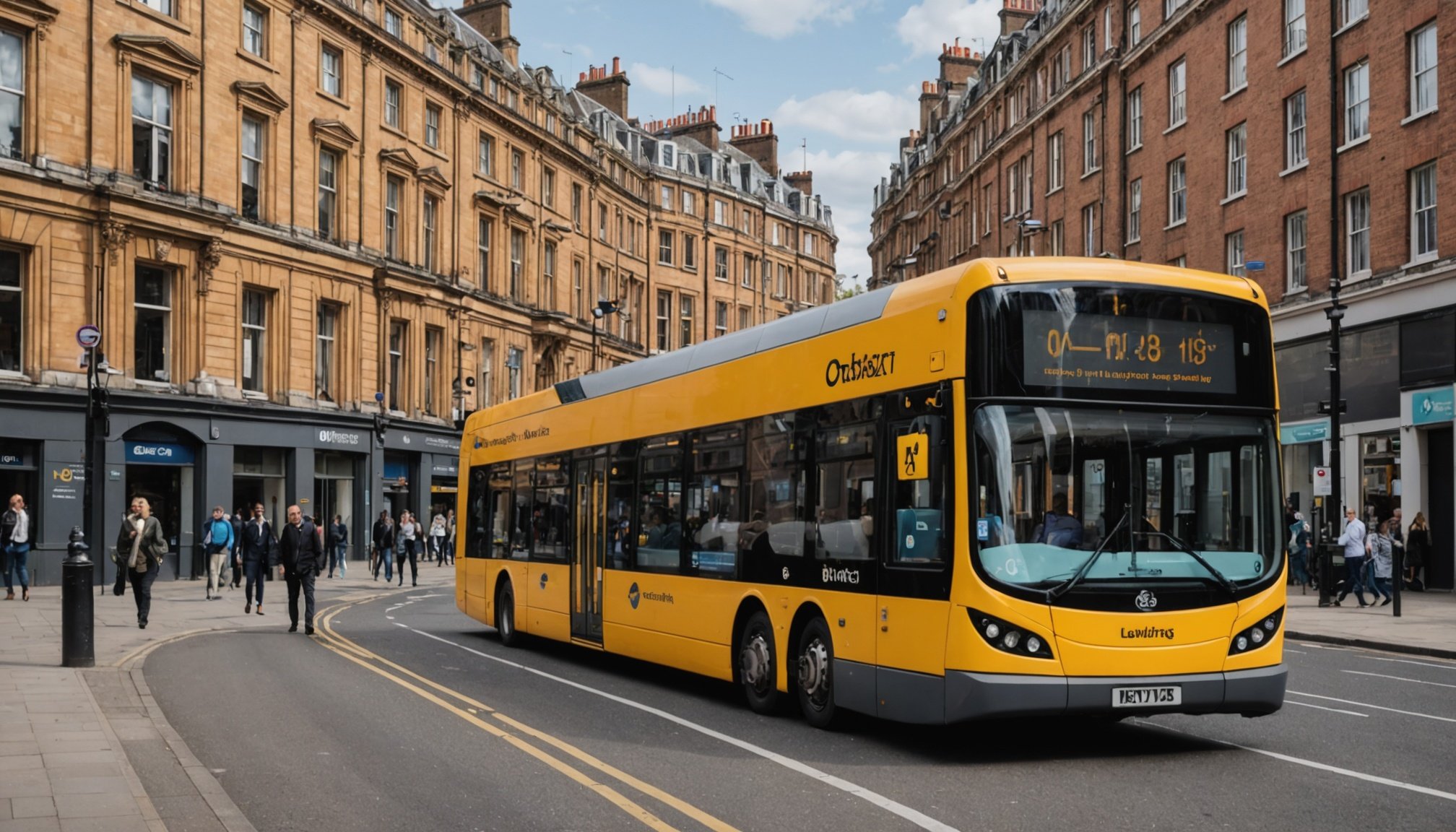Urban mobility faces persistent challenges in UK cities, often leading to congestion and inefficiencies. Harnessing big data offers innovative solutions to enhance public transport systems. By utilizing real-time data analytics, cities can improve routes, reduce wait times, and optimize resource allocation. This transformative approach not only increases the effectiveness of public transport but also promotes sustainable urban living. Discover how embracing big data can unlock greater accessibility and efficiency in the ever-evolving landscape of urban mobility.
The Role of Big Data in Urban Mobility
In the realm of urban mobility, Big Data has emerged as a transformative force, particularly within public transport systems. By analyzing extensive datasets, cities can optimize routes, reduce congestion, and improve service efficiency. This comprehensive data analysis allows transportation authorities to make data-driven decisions that enhance commuter experiences.
Also to see : Transformative tales: discover the best tf yiff comics today
Key Technologies in Big Data Collection
Modern urban mobility relies heavily on technologies that facilitate Big Data collection and analysis. Sensors, GPS tracking, and mobile applications play crucial roles in gathering real-time data. These technologies provide insights into passenger flow and vehicle performance.
Benefits of Big Data in Public Transport
The application of Big Data in public transport offers numerous benefits. Here are a few:
Have you seen this : Ultimate guide to stress-free motorhome travel adventures
- Improved Efficiency: Real-time data enables dynamic route adjustments, minimizing delays.
- Enhanced User Experience: Predictive analytics anticipate passenger needs, ensuring better service.
- Cost Reduction: Data-driven insights help optimize resource allocation, reducing operational costs.
Example Scenario
Consider a city bus system using Big Data to monitor traffic patterns. By leveraging this information, buses can avoid congested areas, improving punctuality and passenger satisfaction. This scenario illustrates the practical benefits of integrating Big Data into urban mobility strategies.
With these advancements, cities can create more efficient, responsive, and sustainable transportation networks, ultimately enhancing the quality of urban life.
Case Studies of Big Data in UK Public Transport
Exploring the impact of Big Data on public transport in the UK reveals transformative insights.
Successful implementations in London
In London, data-driven solutions have revolutionized the transport system. The city's use of Big Data enables Transport for London (TfL) to optimize bus schedules and reduce wait times. By analyzing passenger flow data, TfL can adjust routes dynamically. This ensures efficient use of resources and enhances commuter satisfaction. A notable success is the implementation of the Oyster card system, which collects travel data to improve service delivery.
Innovations in Manchester's transport system
Manchester's transport system showcases innovative use of Big Data. The city employs real-time data analytics to manage traffic lights and control congestion. This data-driven approach minimizes delays and improves overall traffic flow. Additionally, the Metrolink tram network uses passenger data to adjust frequency and capacity, enhancing the user experience. These innovations demonstrate the potential of Big Data to transform urban mobility.
Lessons learned from Birmingham's data initiatives
Birmingham's experience with Big Data initiatives offers valuable lessons. The city initially faced challenges in data integration across different transport modes. However, by adopting a centralized data platform, Birmingham improved coordination and decision-making. This case study highlights the importance of comprehensive data strategies in achieving successful data-driven solutions for public transport.
Data Analytics Applications for Public Transport Improvement
Harnessing the power of data analytics to revolutionize public transport systems.
Predictive Analytics for Demand Forecasting
Predictive analytics plays a pivotal role in enhancing public transport systems by accurately forecasting demand. By analyzing historical and real-time data, transport authorities can anticipate passenger needs and allocate resources more effectively. This proactive approach not only improves efficiency but also ensures that services are aligned with commuter demands, reducing wait times and enhancing overall passenger satisfaction.
Real-Time Data for Enhancing Passenger Experience
The integration of real-time data into public transport systems significantly elevates the passenger experience. Real-time updates on vehicle locations and estimated arrival times empower commuters with vital information, allowing for better planning and decision-making. This transparency fosters a more reliable and user-friendly transport system, contributing to increased commuter trust and efficiency.
Route Optimization and Operational Efficiency
Route optimization is a crucial application of data analytics in public transport. By continuously analyzing traffic patterns and passenger flow, transport operators can adjust routes dynamically, minimizing congestion and delays. This results in improved operational efficiency and a smoother travel experience for passengers.
- Predictive Analytics: Forecasts demand, improves resource allocation
- Real-Time Data: Enhances passenger experience, increases transparency
- Route Optimization: Minimizes congestion, boosts operational efficiency
Challenges in Integrating Big Data into Public Transport
Navigating the integration of Big Data into public transport systems presents several challenges.
Data Privacy and Security Concerns
One of the primary challenges is ensuring data privacy and security. Transport agencies must safeguard sensitive passenger information against breaches. Implementing robust encryption and access controls is crucial. As data collection expands, so do the risks, necessitating stringent privacy protocols.
Resistance to Change within Transport Agencies
Transport agencies often exhibit resistance to change. Adapting to new technologies requires a shift in mindset and operations. This resistance can stem from a lack of understanding or fear of the unknown. Training programs and clear communication can help mitigate these barriers, fostering a culture of innovation.
Technical and Infrastructural Barriers
Technical and infrastructural barriers also impede integration. Legacy systems may not support new Big Data technologies, requiring costly upgrades. Additionally, ensuring seamless data flow across different platforms is complex. Overcoming these hurdles demands strategic planning and investment in modern infrastructure.
- Data Privacy: Safeguarding passenger information
- Resistance to Change: Overcoming organizational inertia
- Technical Barriers: Updating legacy systems and infrastructure
Addressing these challenges is vital for the successful integration of Big Data into public transport, paving the way for enhanced efficiency and passenger satisfaction.
Future Prospects of Big Data in Urban Transport
Exploring the future landscape of urban mobility through emerging technologies.
Emerging Technologies Influencing Urban Mobility
The future of urban transport is increasingly intertwined with emerging technologies. Innovations such as autonomous vehicles, the Internet of Things (IoT), and artificial intelligence are set to revolutionize the sector. These technologies will enable smart cities to collect and analyze data at unprecedented scales, enhancing the efficiency and sustainability of transport systems.
Predictions on Big Data's Impact Over the Next Decade
Over the next decade, Big Data is expected to significantly transform urban transport. Enhanced data analytics will lead to more precise demand forecasting, improved route optimization, and personalized commuter experiences. A study predicts that by 2030, data-driven solutions will reduce urban congestion by 25%, showcasing the profound impact of Big Data on mobility.
- Autonomous Vehicles: Revolutionize transport efficiency
- IoT: Enables real-time data collection
- AI: Enhances predictive analytics
Role of Smart Cities in Shaping Transport Solutions
Smart cities will play a pivotal role in shaping future transport solutions. By integrating Big Data with urban infrastructure, cities can develop adaptive systems that respond dynamically to changing conditions. This approach not only enhances mobility but also supports sustainable urban growth, ensuring that urban transport evolves in line with technological advancements.
Insights from Experts in Urban Planning and Transport
Gaining perspectives from transport planners and data scientists is crucial for developing effective urban strategies.
Perspectives from Transport Planners
Transport planners emphasize the need for integrated urban planning and transport strategy. They advocate for data-driven approaches to enhance mobility solutions. A planner from a leading consultancy states, "Incorporating Big Data insights allows cities to create adaptive transport networks, aligning with urban growth."
Views from Data Scientists
Data scientists play a pivotal role in transforming transport strategy through advanced analytics. They highlight the importance of robust data models to predict commuter behaviors and optimize routes. A senior data analyst mentions, "Leveraging machine learning in urban planning provides precise demand forecasting, crucial for efficient transport systems."
Stakeholder Opinions on Public Engagement and Policy
Engaging stakeholders is essential for successful urban planning. Public engagement ensures policies reflect community needs. A recent survey revealed:
- 78% of stakeholders believe public input is vital for effective transport strategy.
- 65% support policies that prioritize sustainable mobility.
Urban planning experts stress the value of transparent communication to foster trust and collaboration. They recommend regular forums to discuss transport strategy and gather feedback, ensuring policies are inclusive and responsive to evolving urban challenges.











